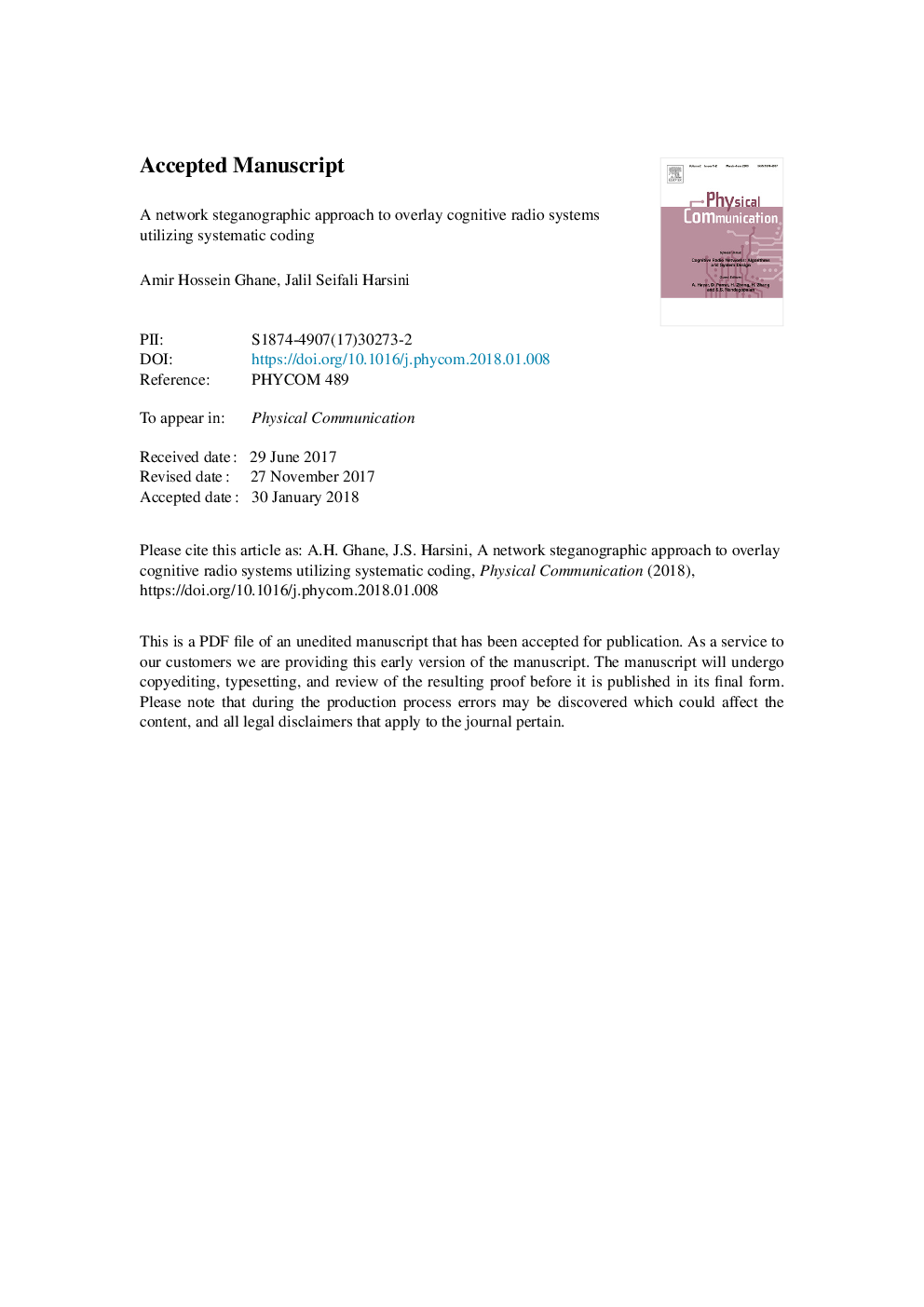| Article ID | Journal | Published Year | Pages | File Type |
|---|---|---|---|---|
| 6889097 | Physical Communication | 2018 | 14 Pages |
Abstract
Network steganography is an information hiding technique that utilizes network protocols to facilitate hidden communication. The aim is to embed secret information bits into regular network traffic (as a carrier) so that confidential data can be transmitted covertly between two communicating parties. In this paper, the concept of network steganography is extended for overlay cognitive radio networks utilizing cooperative relaying protocols with systematic channel codes. In the considered model, the cognitive node relays the primary data according to a time-slotted decode-and-forward cooperative protocol with maximum-ratio combining (MRC) at the primary destination. We propose a steganographic approach in which the cognitive node embeds confidential cognitive data at the wavelet transform domain into primary data code words. In this approach, the embedding operation is designed to preserve the statistical properties of the cover data in terms of decoded BER after MRC decoding of code words at the destination node which includes both the effect of wireless channel errors and errors due to embedding distortion. From this point of view, the proposed scheme may be seen as a lossless steganography scheme that embeds secret data into coded data strings. We provided implementation examples using both systematic BCH and turbo channel coding. The results show that the proposed scheme can provide diversity gain using stego-based MRC at the primary receiver and covert confidential cognitive data communications simultaneously.
Keywords
Related Topics
Physical Sciences and Engineering
Computer Science
Computer Networks and Communications
Authors
Amir Hossein Ghane, Jalil Seifali Harsini,
